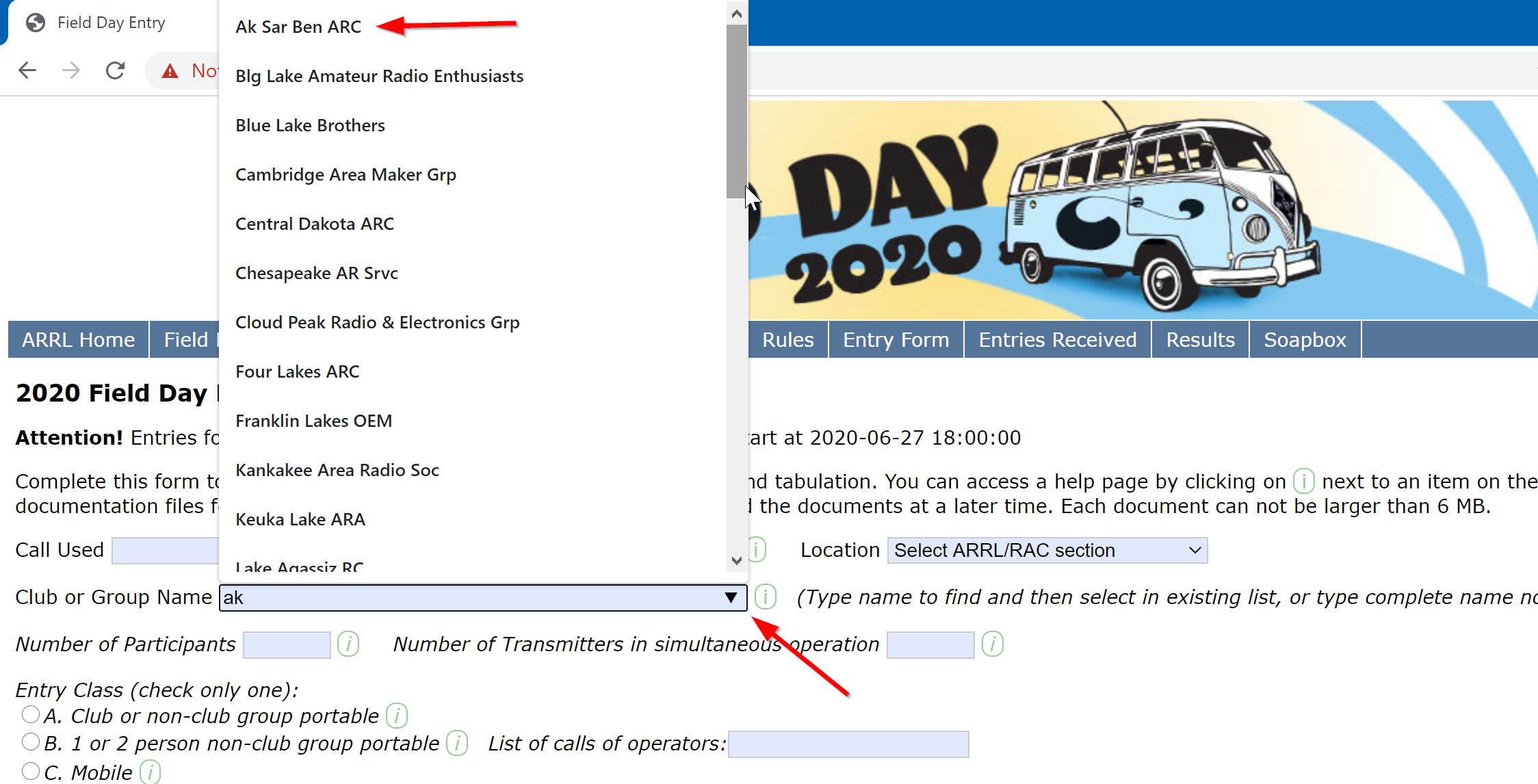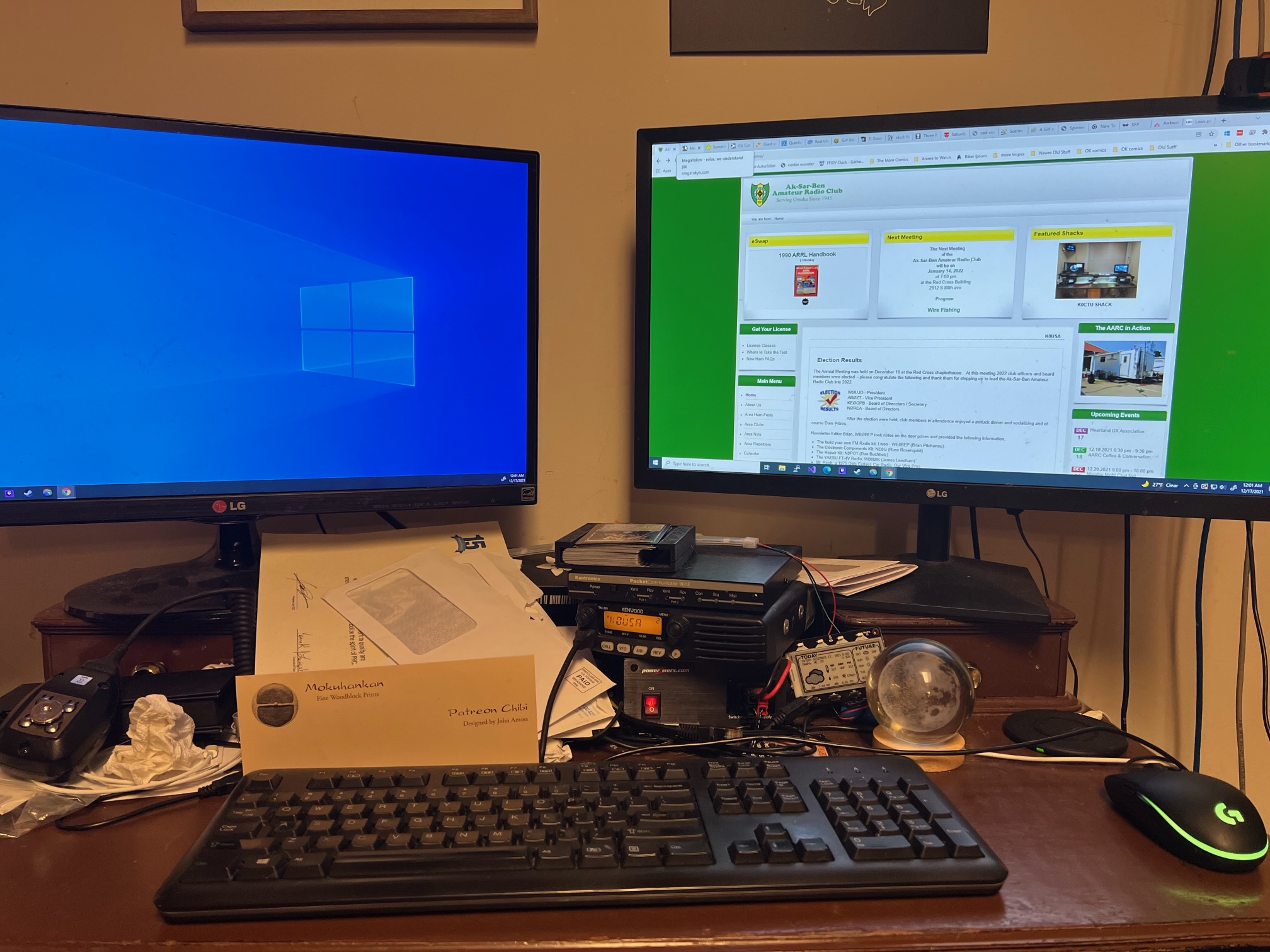this is all great! I am fired up and want to try this... WHAT DO I NEED TO DO?
Your need to:
- Choose a Class of Operation
- Know your FD Exchange
- Prepare your Station Ahead of Time
- Operate in Bands and Modes available under your license class
- Submit your entry to ARRL & Ak-Sar-Ben ARC
#1 There are 6 available Classes (see details in FD Rules)
- A- What are club traditionally does each year
- 3 or more participants
- No permanently installed FD structures (antennas, tower, etc.)
- Emergency power
- All operations included in 1000’ circle
- B- Same as A except one or two people
- C- Mobile (station must be capable of motion with all equipment operational)
- D- Home station with commercial power
- E- Home station with emergency power
- F- This is an EOC (Emergency Communications Center) such as Red Cross
#2 Know Your Exchange
- Your Exchange consists of three parts
- The maximum number of simultaneously transmitted signals
- Your operation class letter
- Your ARRL Section- in our case Nebraska or NE or Iowa IA - depending on your location
- Examples
- 1D NE - A single operator, operating from a home station with commercial power and with one signal at a time is transmitted
- 2B NE - two operators, at a local park, with emergency power and two transmitted signals on the air at same time
- 1B NE - two operators, at a local park, with gas generator as power and one transmitted signal on the air
- 1C NE - one operator in a car with mobile antenna and one transmitted signal on the air
- 1B NE - one operator in a car with dipole antenna strung between two trees and one transmitted signal on the air
- 2E NE- Four operators, operating from a home station with gas generator power and two transmitted signals on the air at same time
- 1E NE- One operator with a 2M FM HT operating from the back porch of their house and all batteries are charged ahead of FD period
- 1D NE - A single operator using a 50 watt mobile 2M FM radio and small outside antenna at a home station with commercial power and with one signal at a time is transmitted
- In the heat of operating it is easy to forget the exchange or even your callsign! We suggest that you print up sheet to post at your position with:
#3 Prepare your Station Ahead of Time
- If you will be doing an away from home operation, create a checklist of things to pack. A good way to do this is with a practice run to a portable operation before FD such as ARRL VHF contest, Park on Air operation, SOTA, etc.
- Install and configure any necessary software. Remember to do all software updates leading up to FD
- Logging
- Digital
- WSJT-X
- FLdigi
- Time Synchronization
- Check all radio equipment for proper operation and spend some quality time reviewing operating manuals
- Antennas ()
- Build and/or acquire any needed antennas
- Do routine antenna and feedline maintenance
#4 Operate on the Bands & Modes available to your license class and authorized for FD use. All contacts must be made on simplex no repeater contacts allowed (except Satellite). Make sure you stay within the frequency limits of your license class for each mode of operation.
- Technician (and legacy Novice) Class Licensees
- 10 Meters
- SSB - 28.300 to 28.499
- Digital - FT8/FT4 or PSK 28.05 to 28.10
- 6 Meters
- SSB - 50.125 to 50.299
- Digital - FT8/FT4 (need radio capable of SSB)
- 2 Meters
- FM Simplex Frequencies- 2M FM simplex channels
- Digital - FT8/FT4 (need radio capable of SSB)
- HF CW (see the presentation “Having Fun with Morse” )
- 80 meters 3.525 - 3.600
- 40 meters 7.025 – 7.125
- 15 meters 21.025– 21.200
- 10 Meters
- General, Advanced or Extra Class
- All of frequencies and modes of Technician (above) plus:
- 160, 80, 40, 20, 15 & 10 Meters (no operations on 60, 30, 17 or 12)
- CW
- Digital (FT8/FT4, PSK & RTTY)
- SSB
#5 Submit your entry to ARRL & Ak-Sar-Ben ARC
- To submit your entry to ARRL use the online submission form- link.
- If you used an electronic logging program- at the end of FD you need to create a “Cabrillo” (*.log) formatted file of your results to submit (Cabrillo creation instructions for N1MM+ / instructions for N3FJP)
- If you have used paper logging and made less than 200 contacts you do not need a dupe sheet
- If you have qualified for any of the FD Bonus Points you may need to submit the proof in the form of pictures and/or documentation
- For Club affiliation please use “AK SAR BEN ARC” exactly as written here, so your score can be part of our club’s aggregated score. (see photo below)
- If you need assistance with submitting your log please contact This email address is being protected from spambots. You need JavaScript enabled to view it.
- Submit your entry to Ak-Sar-Ben ARC to be eligible for a $50 gift card at this link:
https://tinyurl.com/AARCLogSubmission2020






